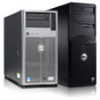Dell PowerEdge XL 5133-4 MXL 10/40GbE Switch IO Module FTOS Command Reference - Page 80
Configuration Source Election, Propagation of DCB Information
 |
View all Dell PowerEdge XL 5133-4 manuals
Add to My Manuals
Save this manual to your list of manuals |
Page 80 highlights
www.dell.com | support.dell.com Configuration Source Election When an auto-upstream or auto-downstream port receives a DCB configuration from a peer, the port first checks to see if there is an active configuration source on the switch. • If a configuration source already exists, the received peer configuration is checked against the local port configuration. If the received configuration is compatible, the DCBX marks the port as DCBX-enabled. If the configuration received from the peer is not compatible, a warning message is logged and the DCBX frame error counter is incremented. Although DCBX is operationally disabled, the port keeps the peer link up and continues to exchange DCBX packets. If a compatible peer configuration is later received, DCBX is enabled on the port. • If there is no configuration source, a port may elect itself as the configuration source. A port may become the configuration source if the following conditions exist: • No other port is the configuration source. • The port role is auto-upstream. • The port is enabled with link up and DCBX enabled. • The port has performed a DCBX exchange with a DCBX peer. • The switch is capable of supporting the received DCB configuration values through either a symmetric or asymmetric parameter exchange. A newly elected configuration source propagates configuration changes received from a peer to the other auto-configuration ports. Ports receiving auto-configuration information from the configuration source ignore their current settings and use the configuration source information. Propagation of DCB Information When an auto-upstream or auto-downstream port receives a DCB configuration from a peer, the port acts as a DCBX client and checks if a DCBX configuration source exists on the switch. • If a configuration source is found, the received configuration is checked against the currently configured values that are internally propagated by the configuration source. If the local configuration is compatible with the received configuration, the port is enabled for DCBX operation and synchronization. • If the configuration received from the peer is not compatible with the internally propagated configuration used by the configuration source, the port is disabled as a client for DCBX operation and synchronization and a syslog error message is generated. The port keeps the peer link up and continues to exchange DCBX packets. If a compatible configuration is later received from the peer, the port is enabled for DCBX operation. Note: When a configuration source is elected, all auto-upstream ports other than the configuration source are marked as willing disabled. The internally propagated DCB configuration is refreshed on all auto-configuration ports and each port may begin configuration negotiation with a DCBX peer again. 66 | Data Center Bridging (DCB)















